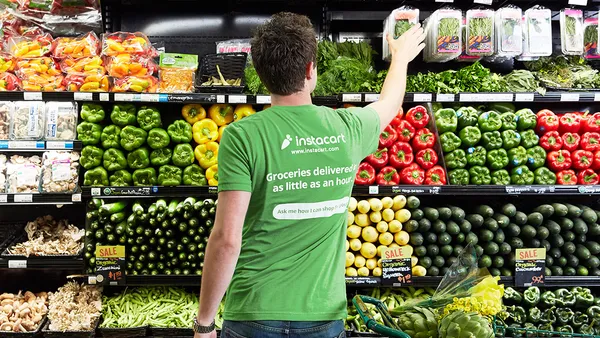Dive Brief:
- Generational traits, clean eating and meal composition are exerting a significant influence on the food industry, according to new research from The NPD Group first reported by Food Business News. Vice president and industry adviser David Portalatin shared some of the group’s findings at the Trends and Innovations Seminar, which took place March 28 in Chicago.
- In a survey that asked whether clean eating improves overall quality of life, 55% of people ages 18 to 24 and 42% of people ages 25 to 34 responded "very much." About 36% of people ages 35 to 54 and 26% of people age 55 and over agreed.
- Increased snacking is redefining meal composition, with eating occasions between meals rising to 429 per capita per year in 2018 from 410 in 2008, the research found. While in the past snacking was driven by junk food, today it is seen as more of a nutritional boost.
Dive Insight:
Food and grocery companies are constantly looking for new ways to drive sales and win with shoppers today, but the pursuit is often complicated by varying, sometimes contradictory preferences among Generation Z, millennials and baby boomers.
Generation Z, for example, seeks in-store experiences but also spends a lot of time engaging with social media and mobile apps. Millennials are attracted to convenience and are major e-commerce adopters, and baby boomers show more brand loyalty and have more money to spend than their younger counterparts.
Some food trends are life-stage driven, Portalatin said, which means they’ll be less transformational to the food industry overall. For example, NPD found that annual meal occasions per capita dropped 3.8% to 1,473 in 2018 from 1,532 in 2008. This can be attributed primarily to the life stage of Baby Boomers, whose metabolism slows and appetites decline as they age. While notable, it shouldn’t drive retailer strategies, he said.
On the other hand, the trend toward clean eating is transformational. It has grown in popularity especially among millennials, and it is likely going to stay strong as this demographic establishes clean eating habits among their children. Average annual organic eating occasions per capita is highest among children ages 0 to 9, according to NPD’s research, showing just how much millennial parents are focused on the trend.
Another transformational trend is digital ordering, with younger millennials and Gen Z driving sales through mobile apps, according to Portalatin. The NPD Group found that adults under age 35 are almost 50% more likely to order groceries online using a mobile device, and digital ordering at restaurants has risen to 5% of total orders in 2018 from 2% in 2013.
With generational traits driving many trends in the food and beverage industries, brands and retailers have to continue to follow these trends and realign their efforts as each demographic reaches key milestones, such as parenthood for millennials, retirement for baby boomers and adulthood for Gen Z. They also face the task of trying to market to multiple generations in a way that will resonate with each group.
Grocery retailers are paying close attention to e-commerce, mobile apps and fresh food assortment, and both grocers and CPG companies are well-aware of increased snacking among consumers. The biggest challenge as companies look to shape their product and marketing strategies is allocating resources to maintain customer loyalty and to drive the biggest baskets.













